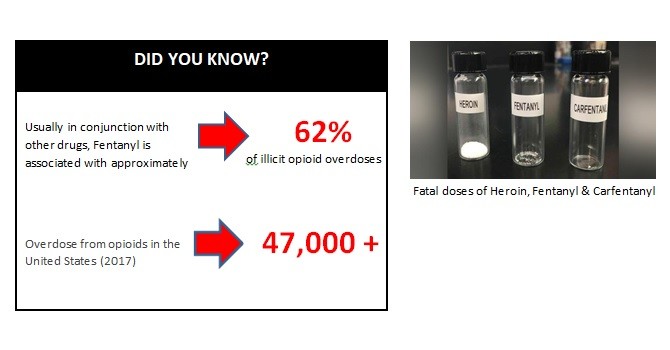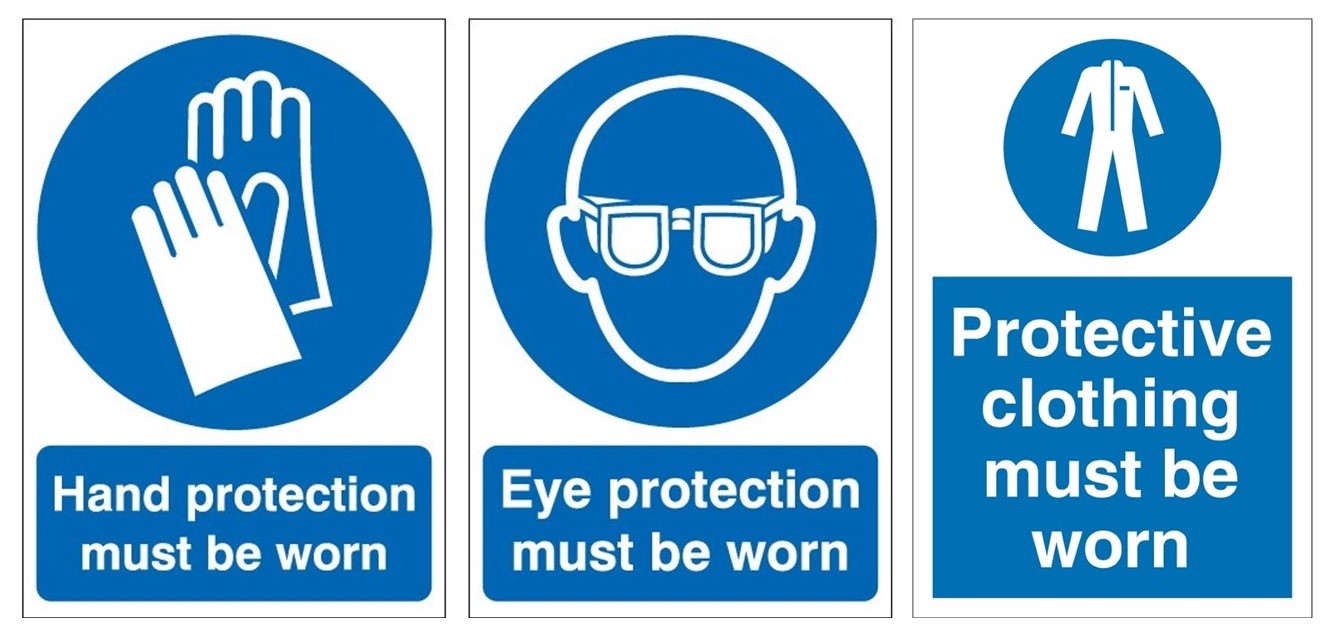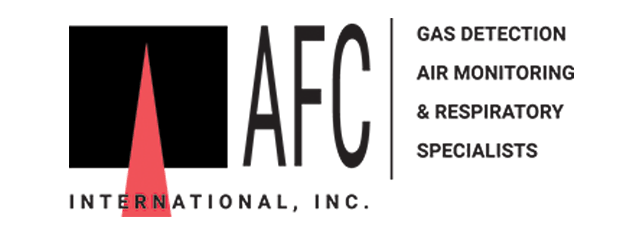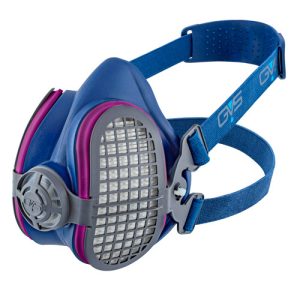FENTANYL: KEEPING OUR FIRST RESPONDERS SAFE

You already take the precautions to protect your body on the outside, but what are you doing to protect your body on the inside? Do you know the most effective way to protect your lungs from an accidental exposure to fentanyl? AFC International does! We have spent decades training and informing you of potential risk and offering you the best solutions to keep you safe and healthy.
Fentanyl use for recreation has increased significantly, posing a serious and real life threatening risk for our nation’s first responders. Here is an overview of what you need to know in order to avoid the immediate and long term effects that fentanyl poses to your body.
What is Fentanyl?
Fentanyl is a synthetic opioid used as a prescription medication for severe pain. It is about 100 times more potent than Morphine. Medically, it is administered intravenously (IV), intramuscularly (IM), or as a patch placed on the skin (transdermally). Recreationally, this drug is often found as a crystal or crystal like powder that can be snorted, or melted down and administered with a needle.

How Could Fentanyl Affect Me?
Inhalation of fentanyl powder is the most likely exposure route for first responders. Onset of a adverse health effects such as coughing, respiratory distress, disorientation or cardiac arrest can be quick, and at times occurring within minutes of an exposure. 2mg of fentanyl is more than enough to deliver a fatal dose in most adults.

Workplace Exposures:
· FIRE/EMS Personnel
· Law Enforcement
· Healthcare Providers
· Border Security
· Military
Exposure Routes:
Inhalation: Small amounts of fentanyl that has been aerosolized can affect a person quickly.
Skin: Fentanyl is transdermal, meaning skin contact with the substance can be deadly. Dermal contact with fentanyl or accidental inhalation of the substance during enforcement activity or during field testing of the substance can result in absorption through the skin – one of the biggest dangers with fentanyl.
Eye: Only limited information about fentanyl absorption systemically through the eye is known.
Occupational Exposure Levels for Fentanyl:
Fentanyl and its analogues such as Carfentanyl do not have established occupational exposure limits (OELs). Pharmaceutical manufacturers have developed internal OELs based on their own risk assessments.
The common time-weighted average exposure limits used by the pharmaceutical industry are reported as 0.0001 mg/m3 for Fentanyl, 0.00032 mg/m3 for Carfentanyl, and 0.001 mg/m3 for Alfentanyl (Van Nimmen et al.).

Equipping Yourself With The Right PPE:
Respiratory Protection: NIOSH does not have any occupational exposure data on Fentanyl among emergency responders. Therefore it is recommended by NIOSH that law enforcement personnel assess the specific risks of each operation and determine the appropriate personal protective equipment (PPE) to protect against respiratory and/or dermal hazards.
The following PPE recommendations from NIOSH are provided as interim guidance. These interim recommendations apply to routine activities after an arrest or search warrant execution, such as evidence collection activities. This interim guidance applies to powder, pill, and liquid forms of Fentanyl or its analogs that may be present during the evidence collection phase of the law enforcement operation.
NIOSH suggests that while handling and processing Fentanyl and its analogs, first responders such as law enforcement personnel, emergency medical services (EMS), and fire fighters should wear:
• NIOSH-approved half-mask filtering face piece respirator rated P100 or a tight-fitting full face piece air-purifying respirator with multi-purpose P100 cartridges/canisters. If an elastomeric half mask respirator is used instead of a respirator with a full face piece, safety goggles/glasses should also be worn for ocular protection.
• Chemical, biological, radiological, and nuclear (CBRN) canisters with full face respirators provide P100 protection as well.
• Powered air-purifying respirators (PAPRs) with high-efficiency particulate air (HEPA) filters may also be used.
GVS Filter Technology
ELIPSE P100
- NIOSH Approval number: P100 TC-84A-6949
- Elipse P100 respirator meets the requirements of 42CFR84
- HESPA + P100 >99.97% efficiency
- Lightweight, compact, flexible design is made of hypo-allergenic odorless, medical grade without latex or silicone.
- 23°F to 131°F temp range
- Storage Life: 5 years for mask & filters

Eyewear: Ideally a full face respirator is used to provide respiratory and eye protection. AFC International suggests using goggles in the event that a half face respirator is worn.
Nitrile Gloves: are suggested when there is a risk of handling Fentanyl-related compounds. While the permeation rate of Fentanyl through nitrile is unknown, nitrile generally shows low permeability to other hazardous drug compounds. Nitrile gloves should be purchased with a minimum thickness of 5 mil (0.127 mm). Powder-free nitrile gloves are recommended due to the fact that particulates from the glove may absorb the narcotic compounds which may increase the potential for dermal contact/absorption during doffing and spread contaminants to unintended surfaces. See NIOSH suggestions for specifics on sizing, replacement and double gloving procedures.
Coveralls: First responders who are performing any task that would potentially aerosolize Fentanyl, such as sweeping or “burping” bags to remove air, should wear dermal protection that covers their arms and legs. Options include coveralls or chemical-resistant and disposable protective sleeves that are impermeable, coated, and film-based. Chemical-resistant/disposable boot covers are also recommended to reduce spread of contamination.
References:
Fentanyl: Preventing Occupational Exposure to Emergency Responders, NIOSH (2017). Retrieved from https://www.cdc.gov/niosh/topics/fentanyl/risk.html on May 14, 2019.
Opioid Overdose Crisis: National Institute on Drug Abuse, (2019). Retrieved from https://www.drugabuse.gov/drugs-abuse/opioids/opioid-overdose-crisis on May 14, 2019.
Suggestions contained in this document are intended for law enforcement officials that may come into contact with Fentanyl in its manufactured form, such as a powder, pill, and/or liquid form. This document DOES NOT provide suggestions for law enforcement officials that may enter a Fentanyl manufacturing environment, such as a clandestine lab. All statements, technical information and recommendations contained herein are based on data we believe to be reliable, but the accuracy or completeness thereof is not guaranteed. There is no representation, warranty, guarantee or other obligation of AFC International or its employees arising out of this presentation. Please refer to specific products packaging, user instructions and related documents for complete details. AFC International shall not be liable for any loss and/or damage, whether direct, indirect, incidental, special or consequential arising out the sale, use or misuse of AFC International Personal Safety products or the user’s inability to use such product


